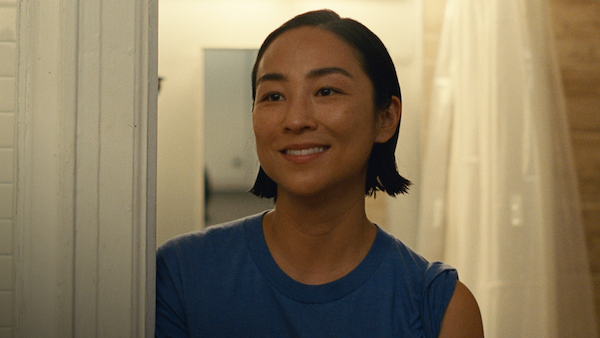Movie review by Greg Carlson
Writer-director Celine Song’s feature debut “Past Lives” premiered to much acclaim at the Sundance Film Festival in January. Beautifully photographed by Shabier Kirchner on 35mm film, the thoughtful and contemplative drama might be as destined for award season accolades as the star-crossed childhood sweethearts are for paths that twine together and grow apart over the course of the near quarter-century explored in the narrative. Song’s powerful imagination and confident command of pace and rhythm suggest the work of a veteran filmmaker with decades of experience. One of the year’s best films – a deeply rewarding journey of love and friendship – “Past Lives” is not to be missed.
An absolutely phenomenal Greta Lee plays Na Young, a South Korea-born writer whose family moved to Toronto when she wasn’t quite a teenager. Known now as Nora, she reconnects with Hae Sung (Teo Yoo) after discovering that her cherished classmate had reached out in search of her through a Facebook post. Twelve years have passed, but Nora and Hae Sung reconnect using Skype. Now living in New York City and committed to developing her craft, Nora can’t accept Hae Sung’s invitation to travel to see him. She proposes he visit her, but his own plans include imminent language study in China.
Choices made, Nora soon meets and marries Arthur (John Magaro), even if Hae Sung never fades from her imagination. The particularities of the protagonist’s unique association to each man are developed by the director through the sharp script, which never resorts to duplicity or deceit to manufacture or escalate conflict. Instead, the honesty cuts like a scalpel, especially when Hae Sung finally makes it to America and all three key players expose raw vulnerabilities in public and in private. Arthur and Hae Sung each know a part of Nora inaccessible to the other.
Like Davy Chou’s equally moving “Return to Seoul,” “Past Lives” offers a detailed and in-depth consideration of Korean identity through personal connections inside and outside the country. Both films were, in part, based on incidents from the real lives of their creators. And both movies feature world-class performances from the lead actors. But hidden in plain sight next to those gorgeously realized humans are the notions of time and of place. Relocation, displacement, and the complexities of rootedness (and its lack) give us much to consider beyond the action, such as it is.
While the triangle and loving-the-one-you’re-with practicalities pay homage to “Casablanca,” “Past Lives” differs from the legendary Oscar-winner in several ways. Unlike Rick and Ilsa, Nora and Hae Sung never completely know one another as lovers. At least not physically. Song cinematically renders the longing, the aching, and the yearning with the exquisite torture of memorable moments in “The Remains of the Day,” “In the Mood for Love,” and “Brief Encounter,” to name a few. The cycles of twelve years (depicting the ages of 12, 24, and 36) that Song uses to structure the story focus viewer attention on thematic questions of roads not taken just as much as the possibility/impossibility that Nora and Hae Sung might finally get together.
